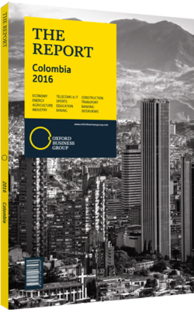Alejandro Costa, General Director, Impala Terminals Colombia: Interview
Interview: Alejandro Costa
What port management upgrades are needed to meet the projected increase in demand?
ALEJANDRO COSTA: Colombia’s defective transport infrastructure has a direct impact on its competitiveness, logistics performance and, more generally, on its potential for economic growth. In order to achieve the necessary upgrades, Colombia needs to invest in infrastructure. In terms of water-based infrastructure, for example, the country needs to raise its installed capacity for the management of hydrocarbons at oceanic ports. Likewise, investment needs to be channeled into the development of river ports and dry ports, and this is already under way on the Magdalena River.
For terrestrial infrastructure, Colombia needs to improve the connectivity of national routes with new logistics systems and improve its regulatory framework to enable efficient multi-modal transport. The improvements under way in the Atlantic and Pacific regions will increase Colombia’s competitiveness, enabling the export of products and raw materials that today cannot be exported due to logistical costs. Additionally, these improvements will expedite and facilitate the importation of general cargo merchandise and consumer goods, with the potential to benefit the people and regions around these projects.
Can improved river transport options provide an alternative to roads?
COSTA: River transport is not intended to substitute for road transport, but to complement it and other means of transport, like rail. These should work together and be connected to create an efficient transport system. It is impossible and unfeasible to think about multi-modal transport without the participation of road transport, which plays a central role in connecting cargo generators and receivers with transfer stations and logistics hubs. Road transport firms will be the first to benefit from investment into multi-modal improvements, as it will allow for transport specialisation, segmentation and the division of cargo types, improving the profitability and efficiency of each means of transport. The projected improvements to river transport hold significant potential. Once the enhancements in the navigability of the Magdalena River are completed, the annual cost of maintaining a kilometre of river will be reduced to $24. Currently the cost of maintaining a kilometre of road is about $100, a fact that demonstrates the competitive advantages of the Magdalena river.
How can logistics firms increase efficiencies?
COSTA: To activate multi-modal transport, the processes of all the operators in the transport chain must be integrated. However, this effort will be a limited one if national and local governments do not modernise platforms and operating standards to speed up bureaucracy. We recognise the central government’s efforts to improve the transport chain, especially in terms of designing, structuring and implementing changes to make the country more competitive, but there is still significant room for improvement.
What hurdles do integrated port platforms face?
COSTA: Multi-purpose port terminals are the hardest to manage, since they receive all types of merchandise and require varied machinery, warehousing and means of transport. These variables demand specialised technological and human capital. To increase efficiency, loading and unloading procedures have to conform to modern technology. Generally speaking, specialised terminals that only deal with one type of cargo are able to achieve higher levels of efficiency because they perform the same daily activity. Given the lack of suitable technology and appropriate training, reaching the same level of efficiency in multi-purpose terminals can be difficult. Adequate technology and proper training have to be a priority if Colombia wants to achieve the highest degree of productivity.
You have reached the limit of premium articles you can view for free.
Choose from the options below to purchase print or digital editions of our Reports. You can also purchase a website subscription giving you unlimited access to all of our Reports online for 12 months.
If you have already purchased this Report or have a website subscription, please login to continue.

